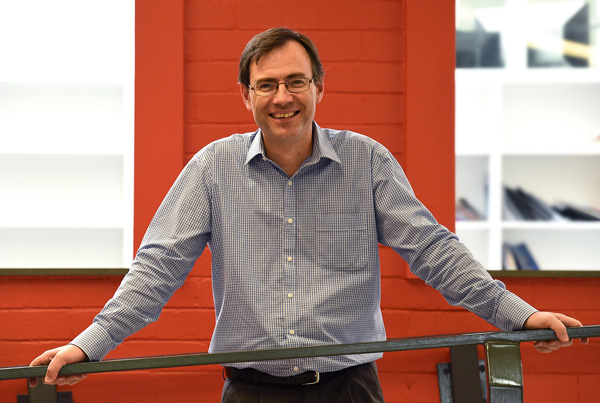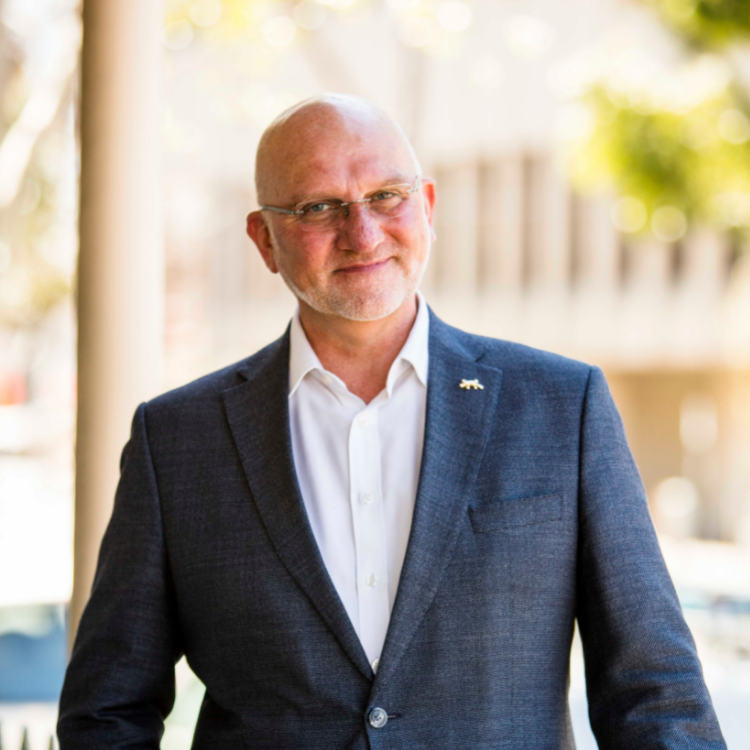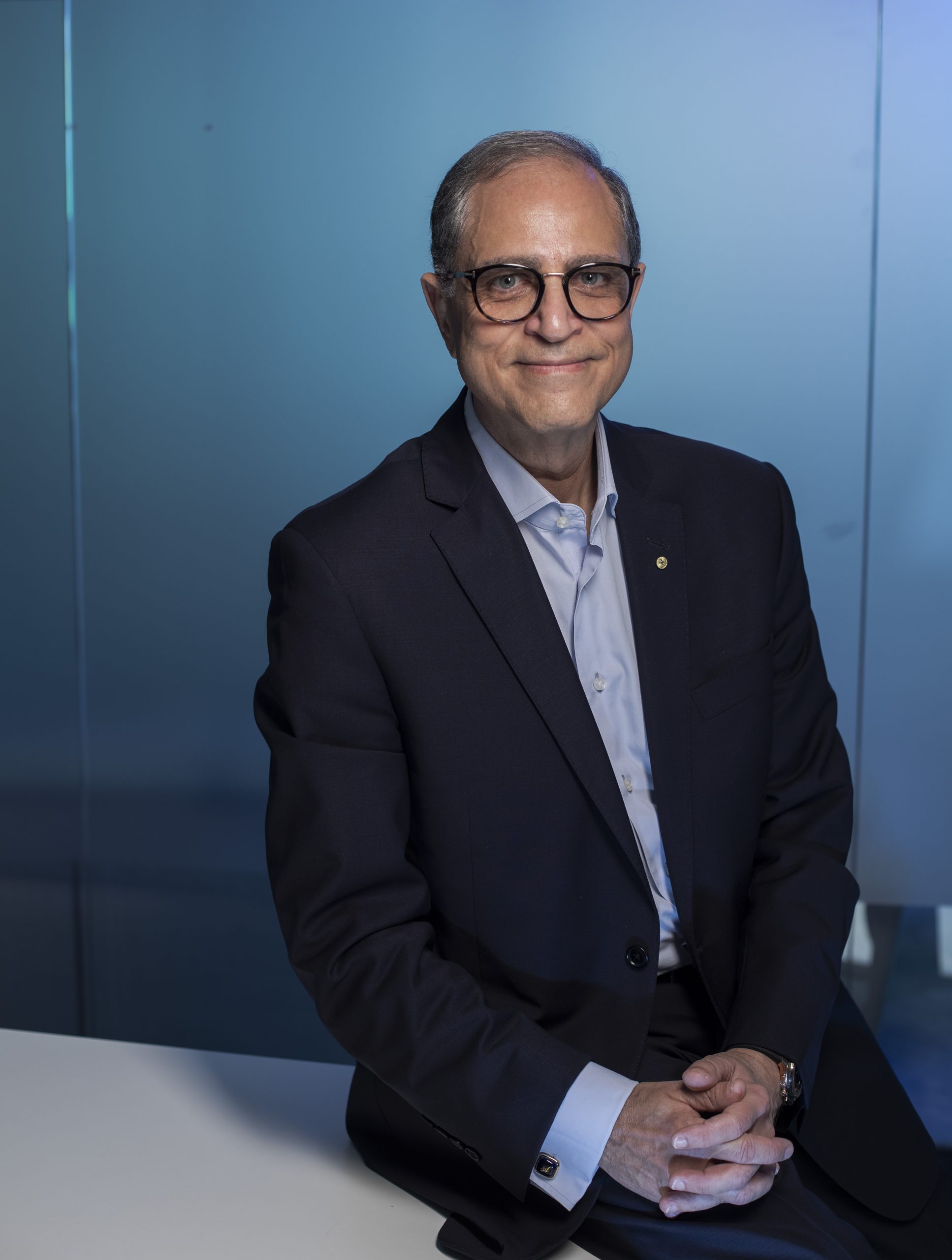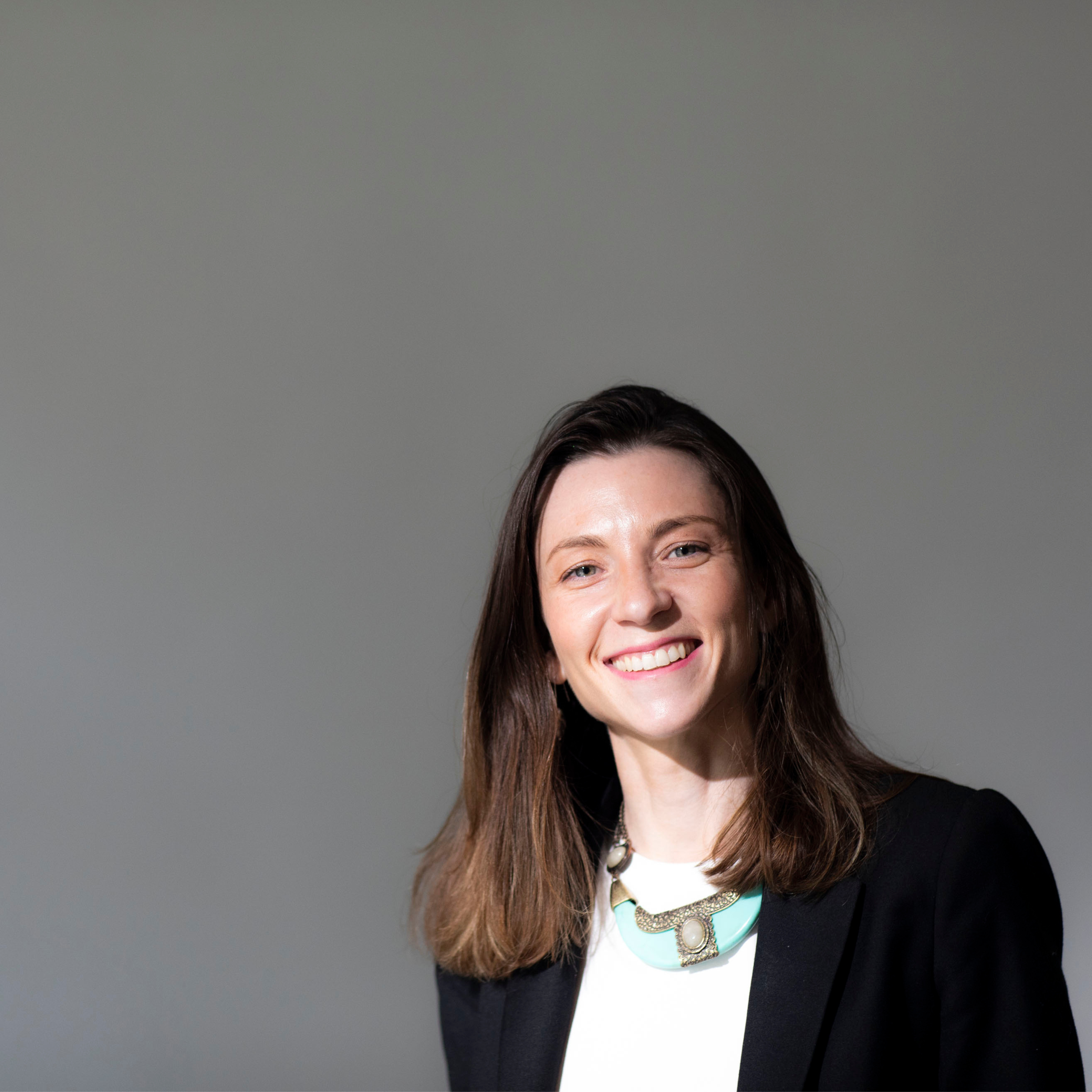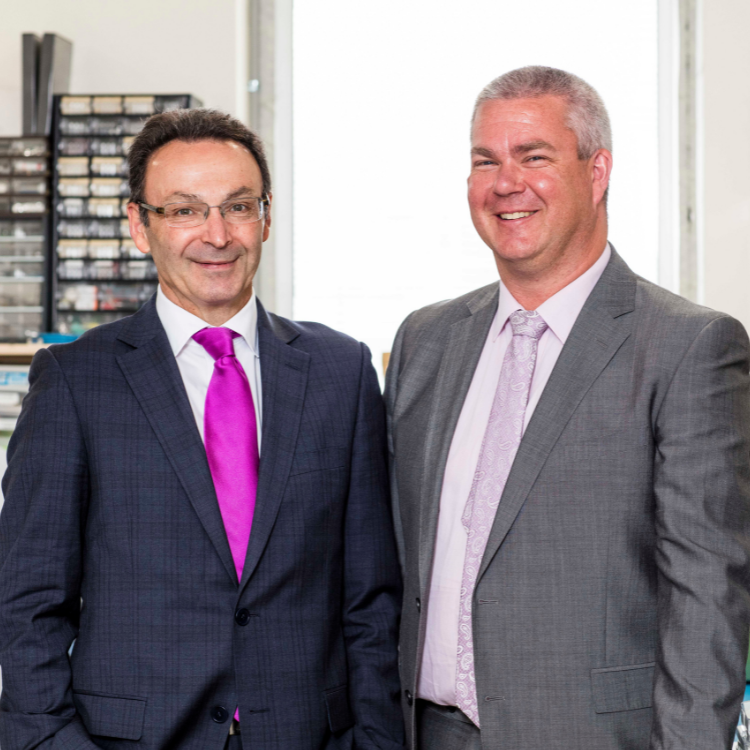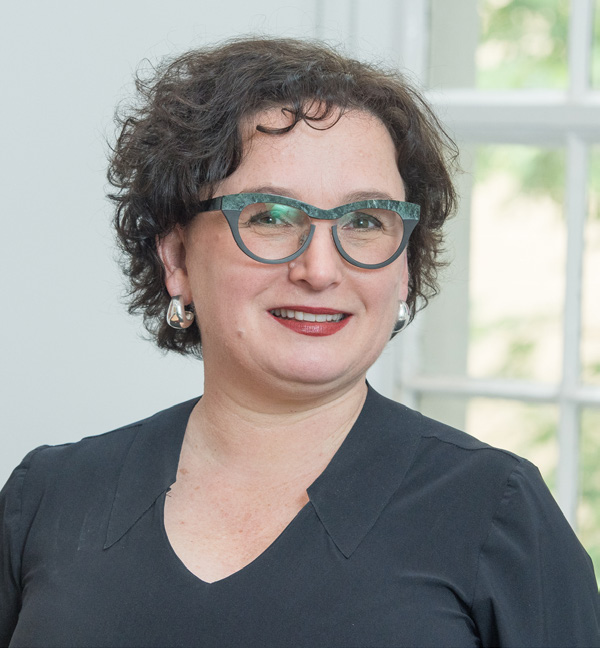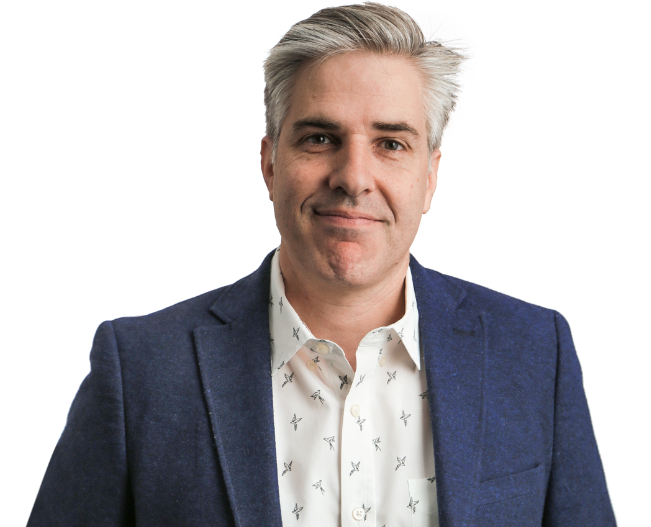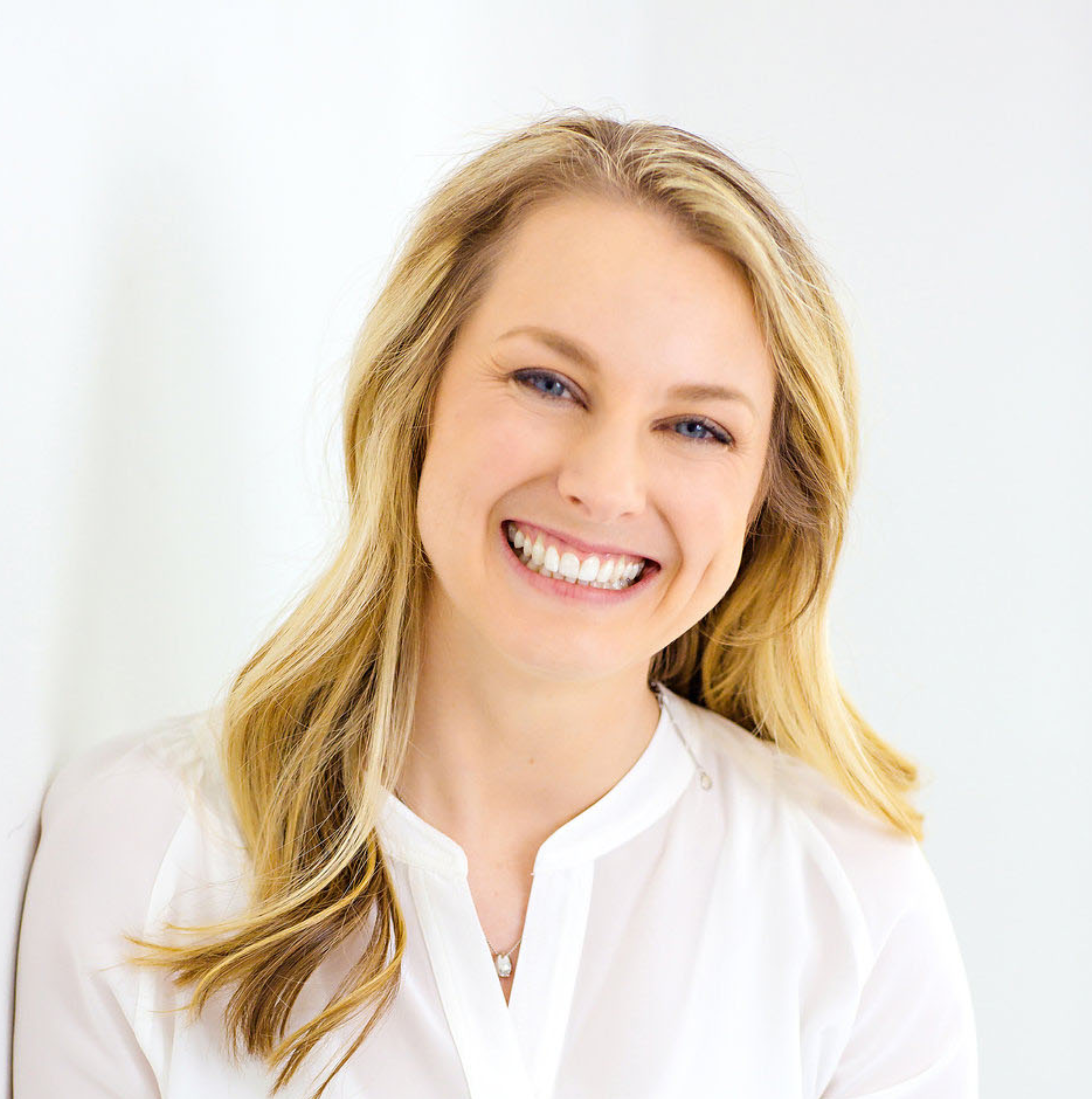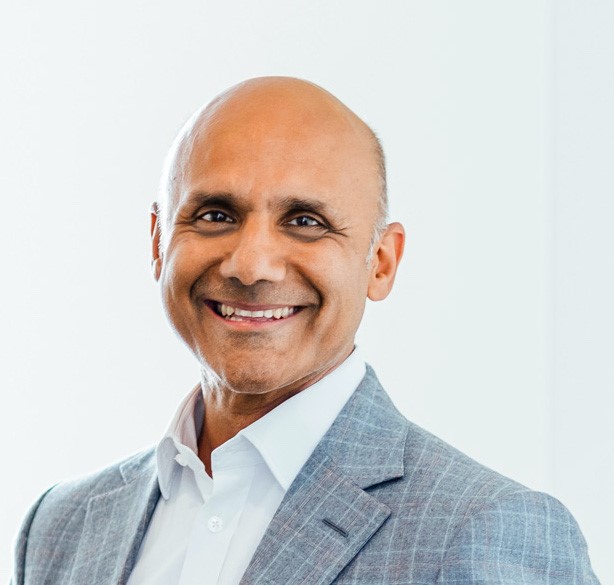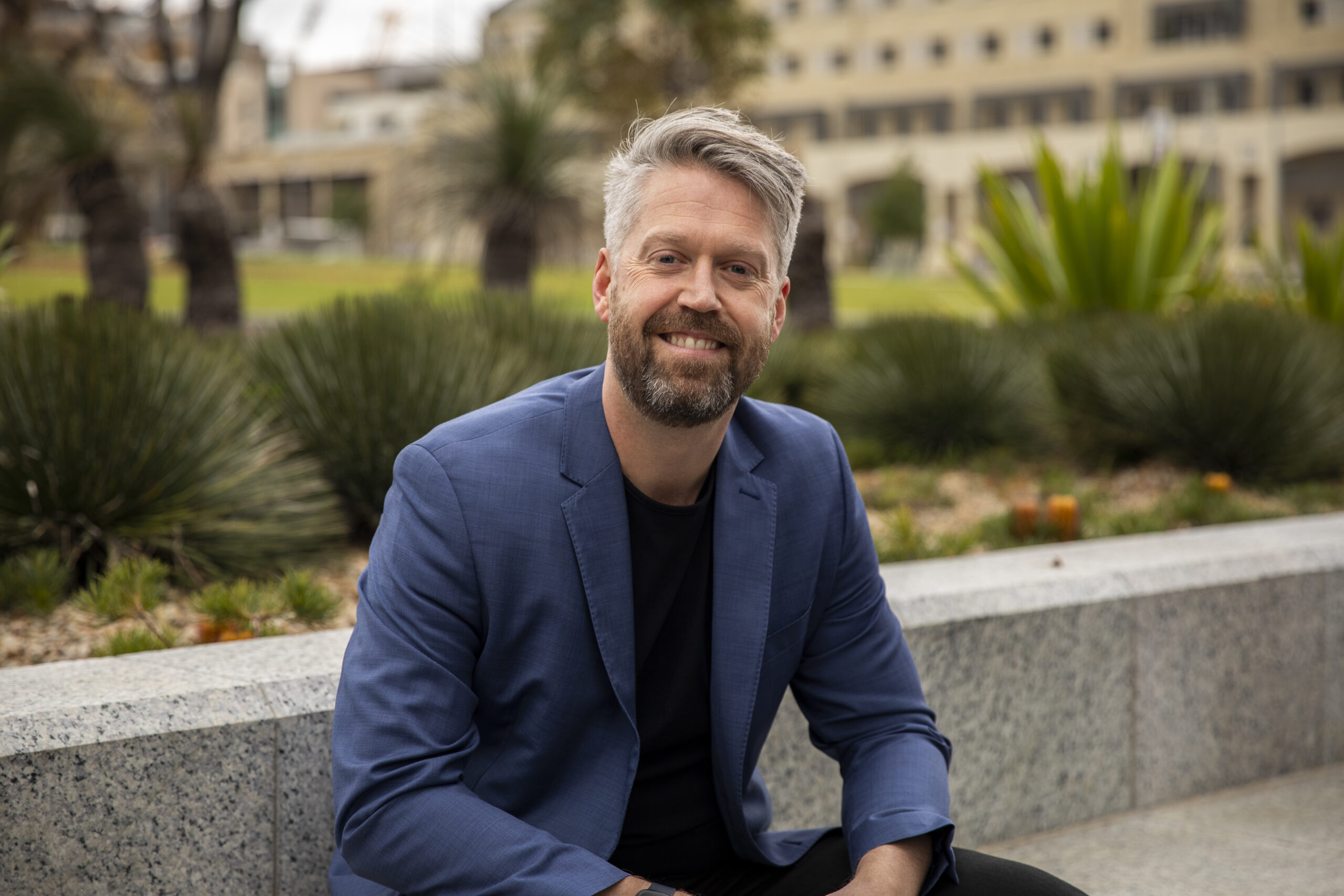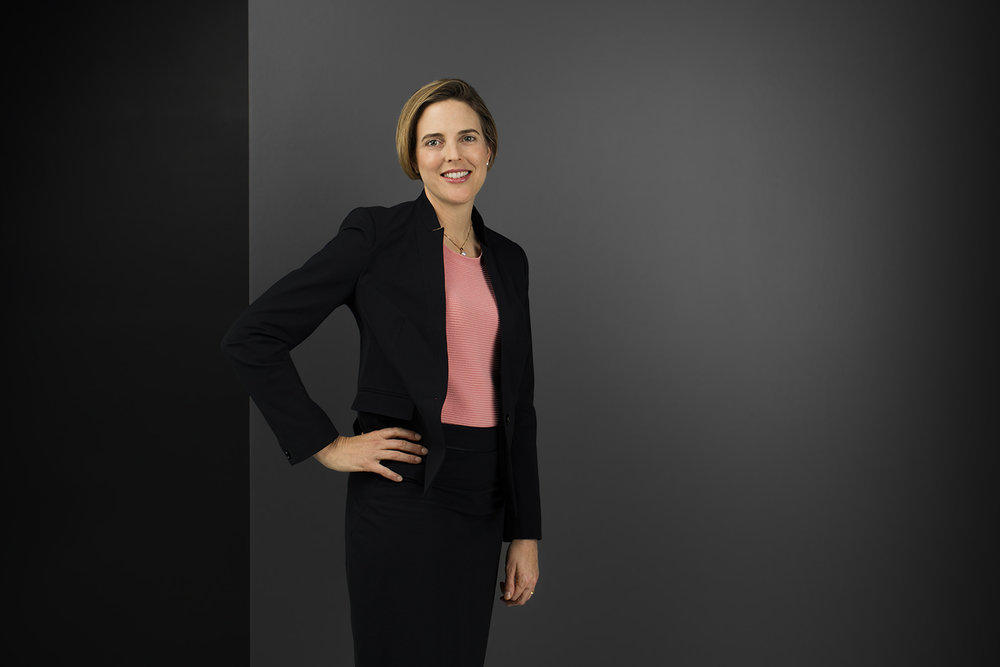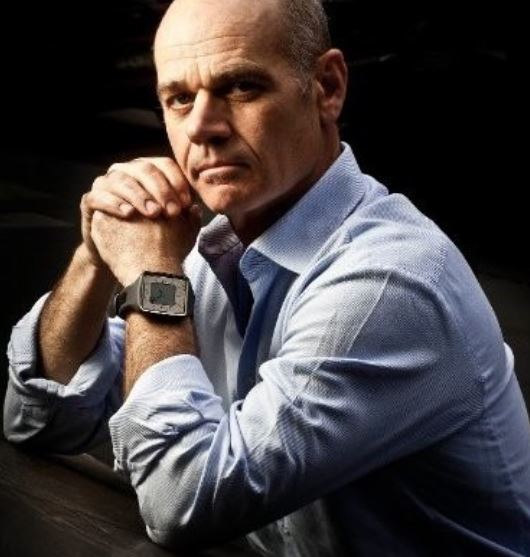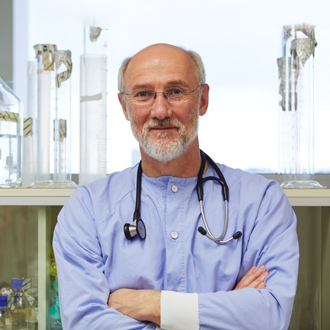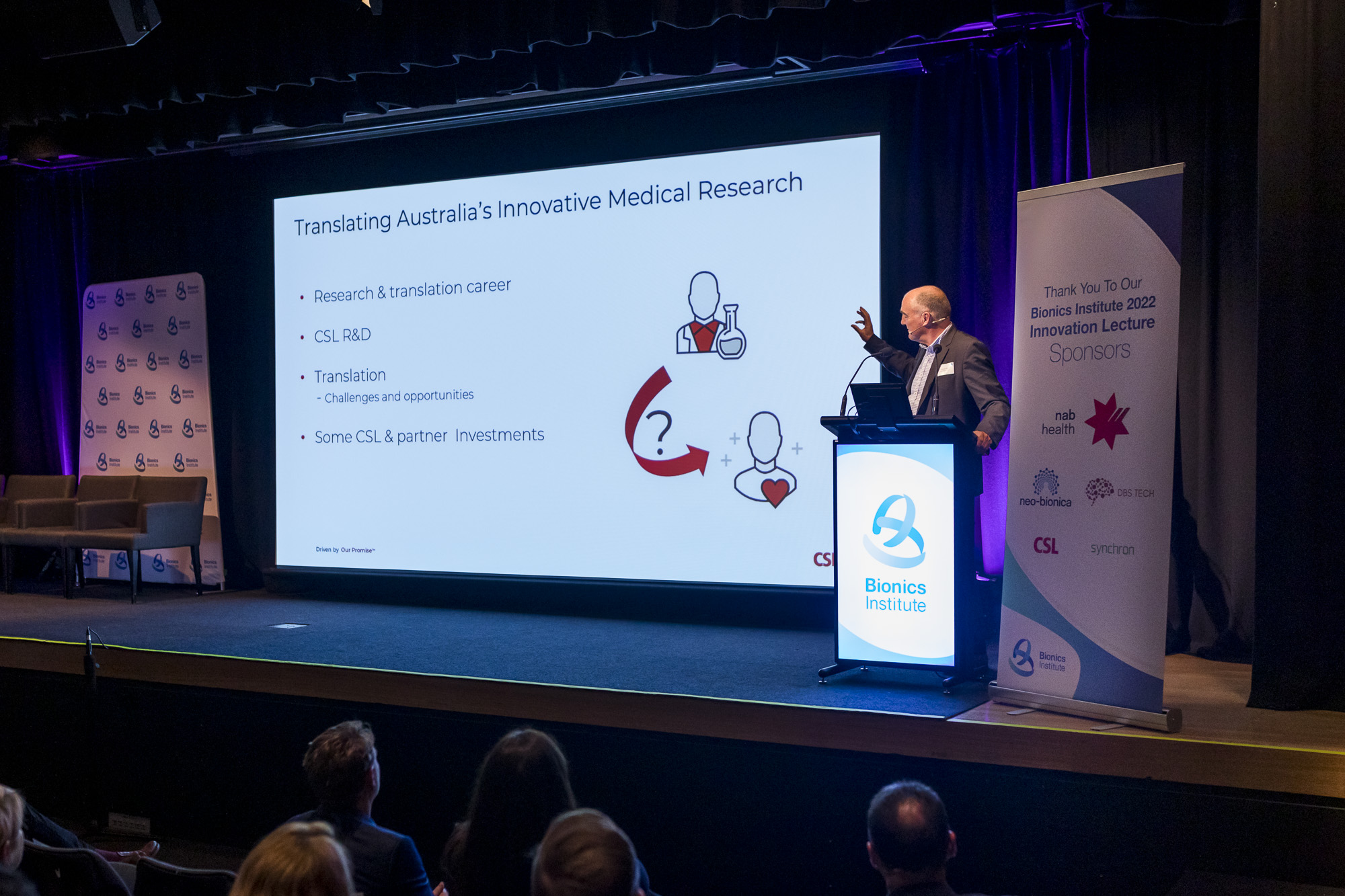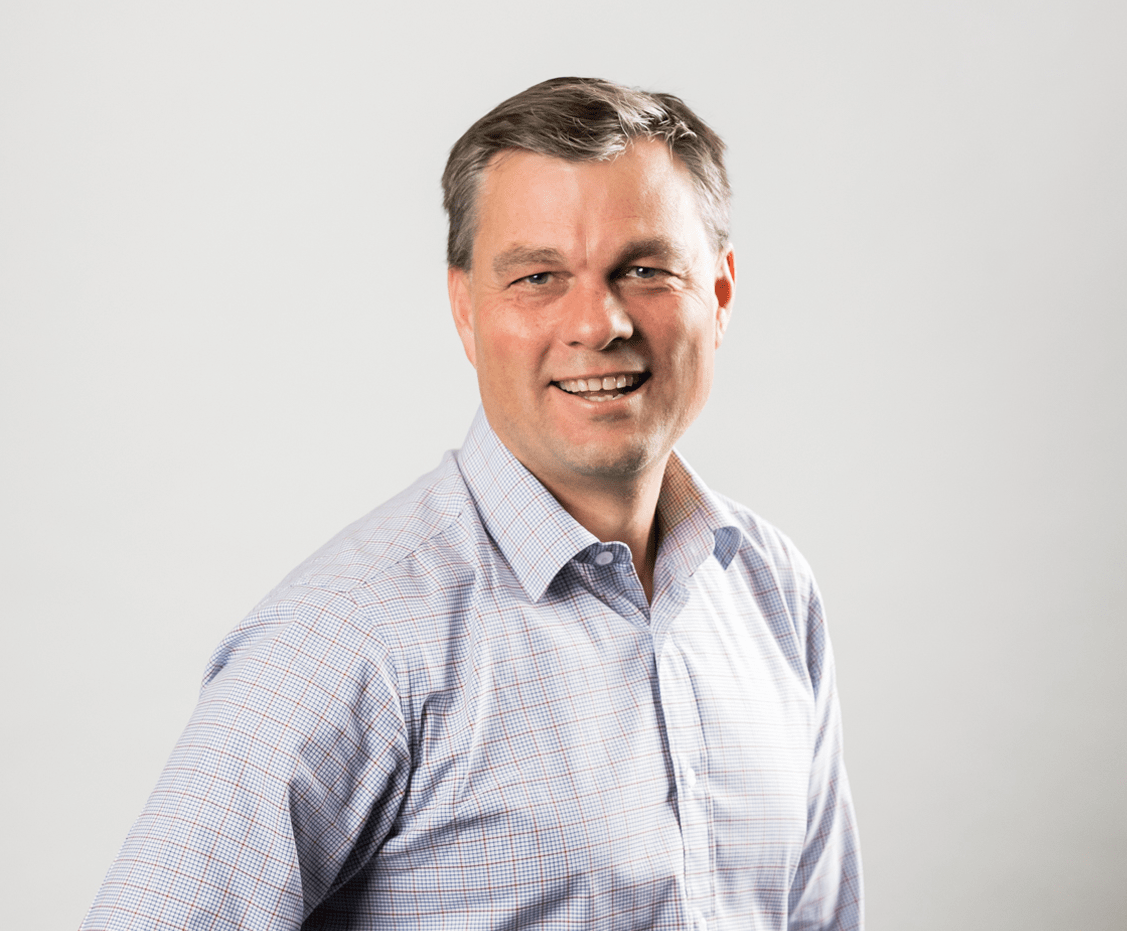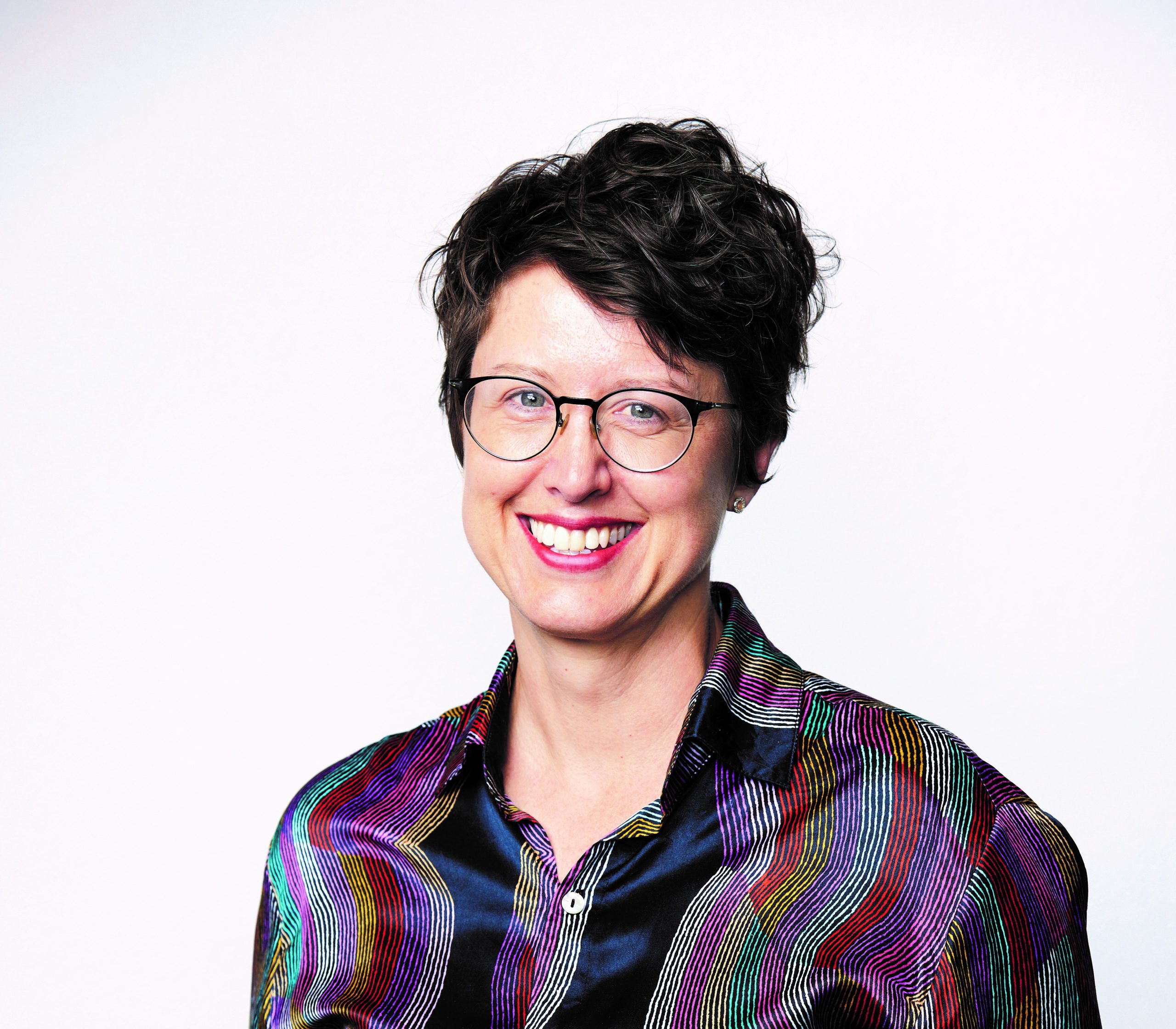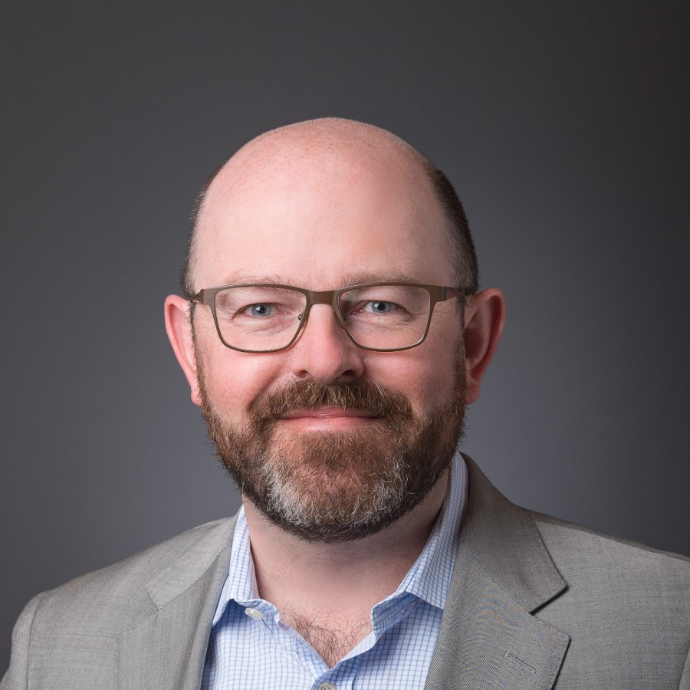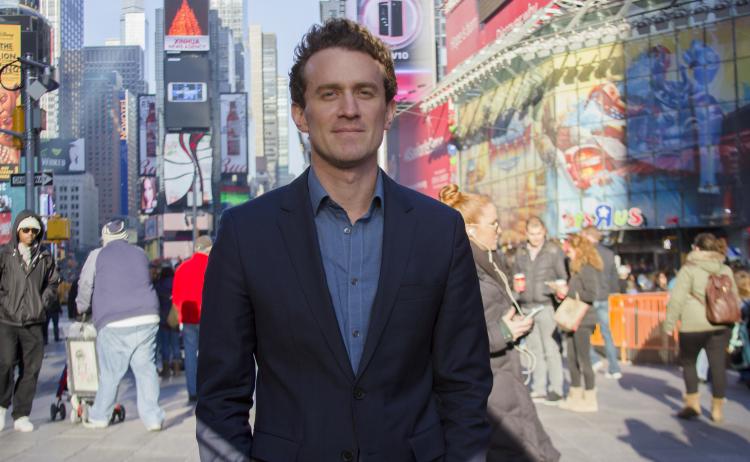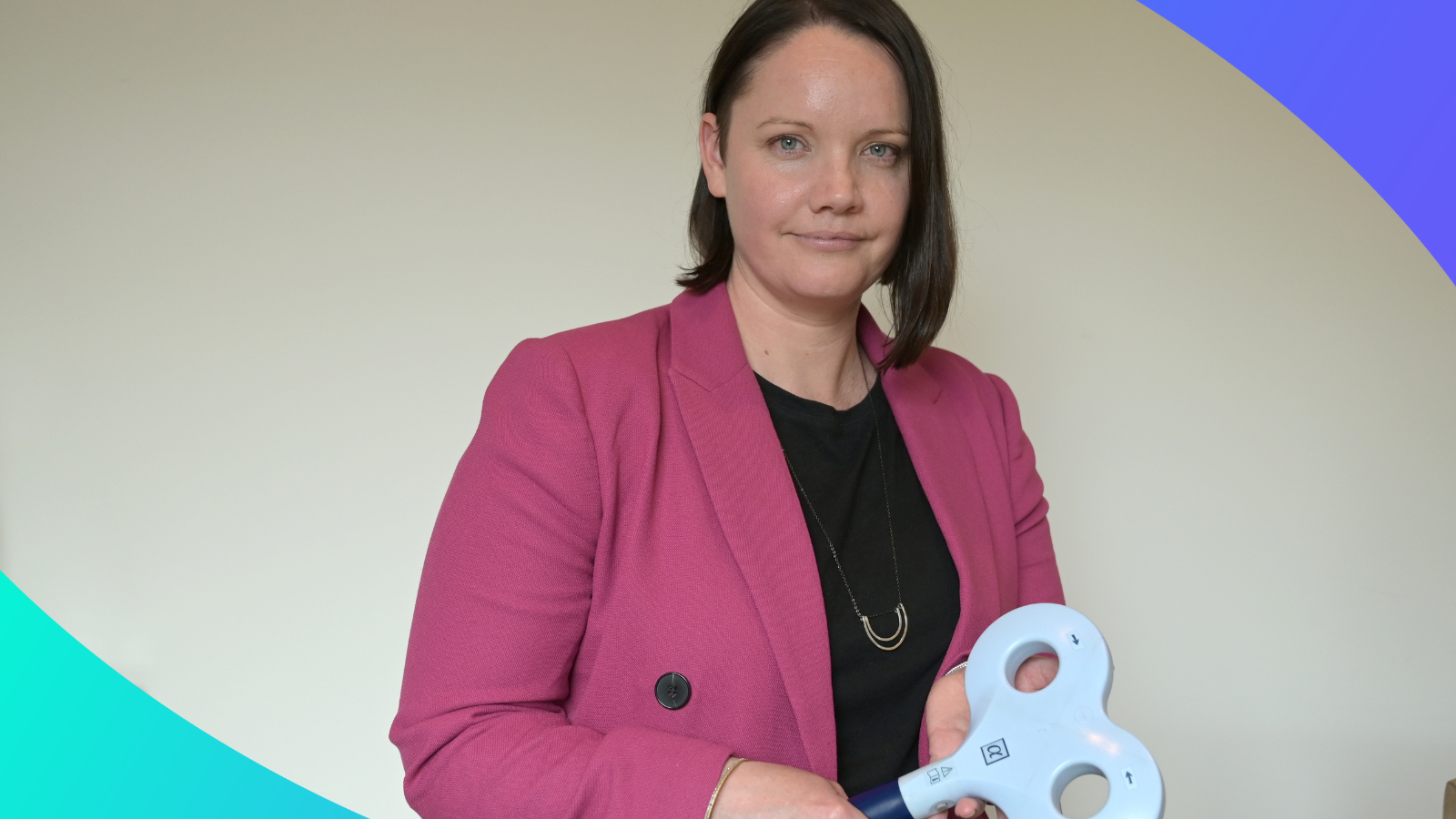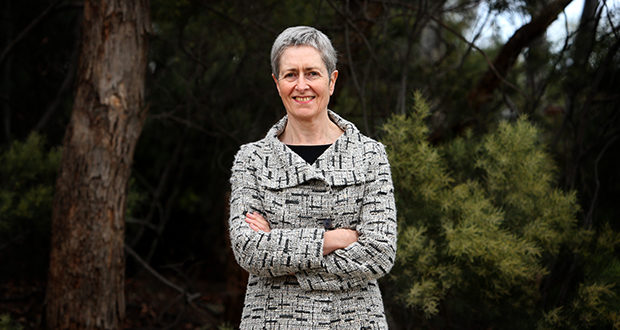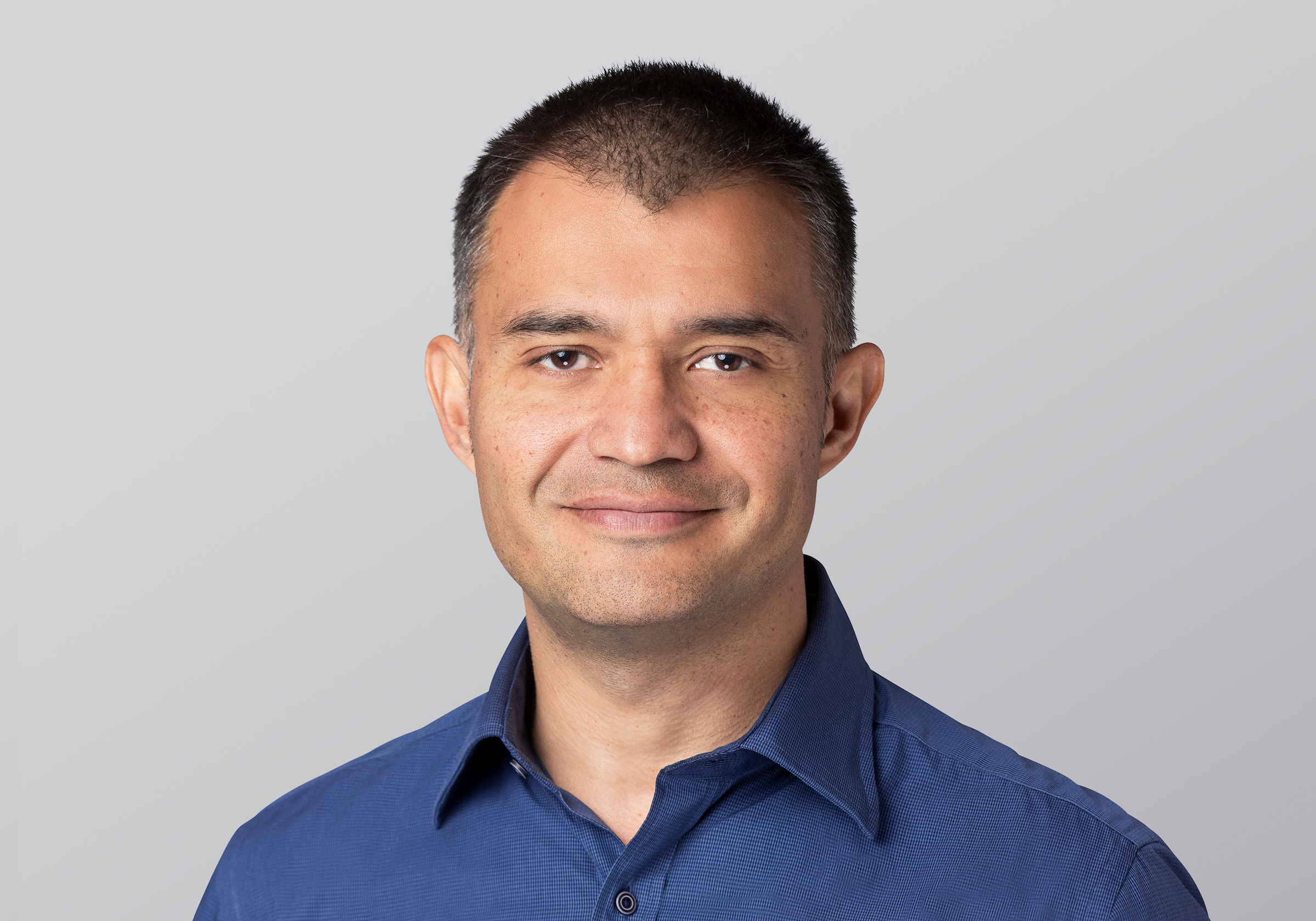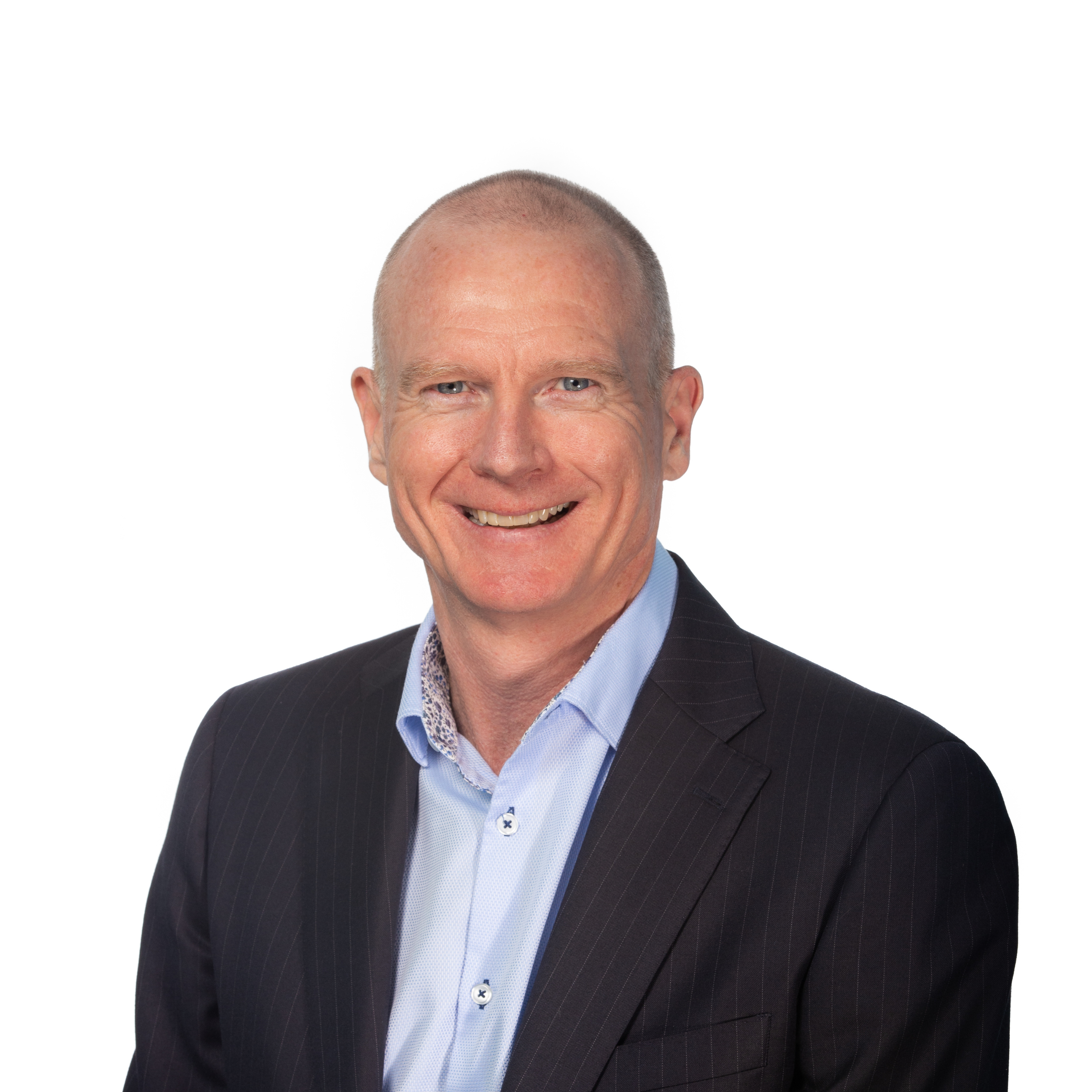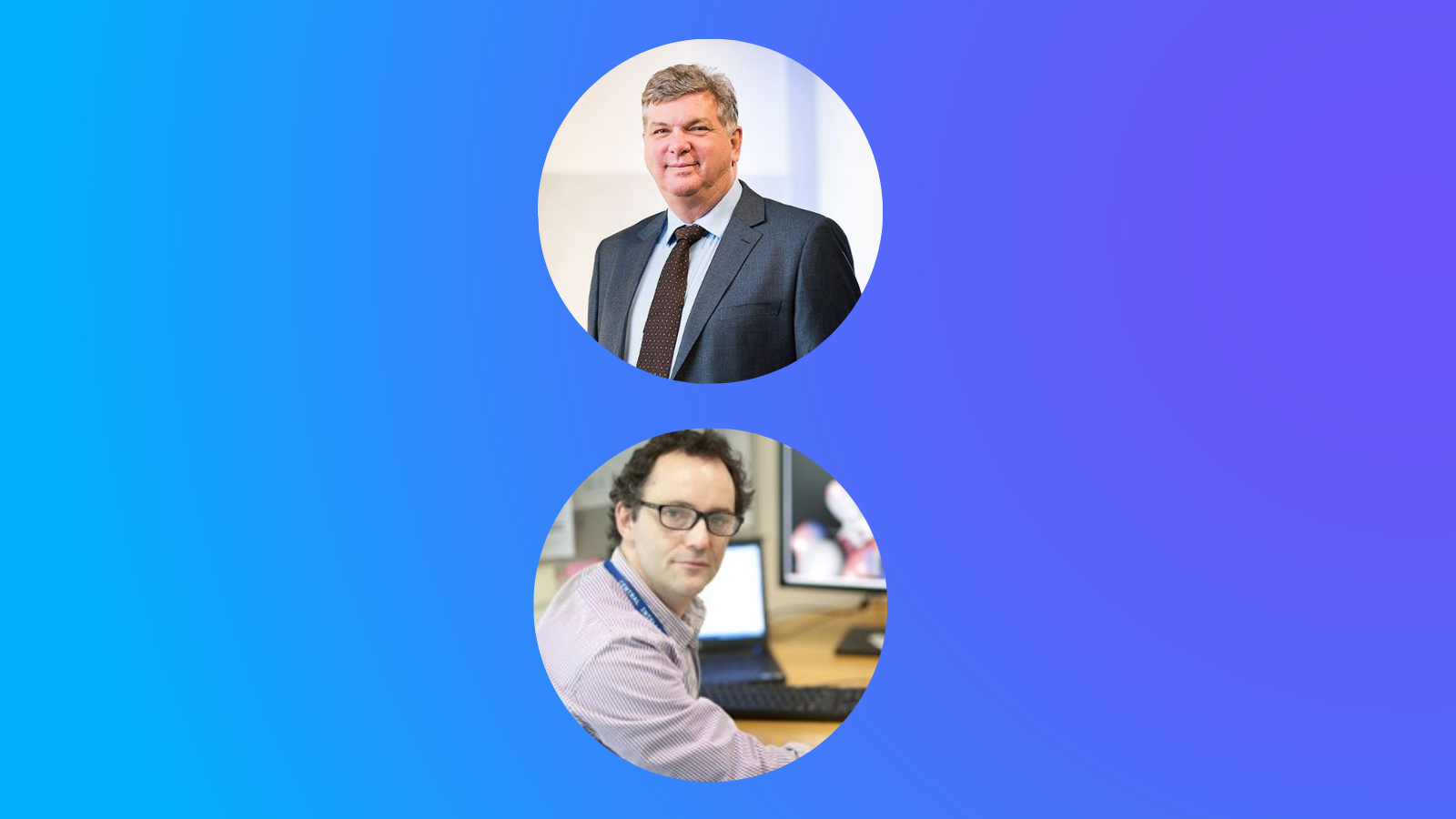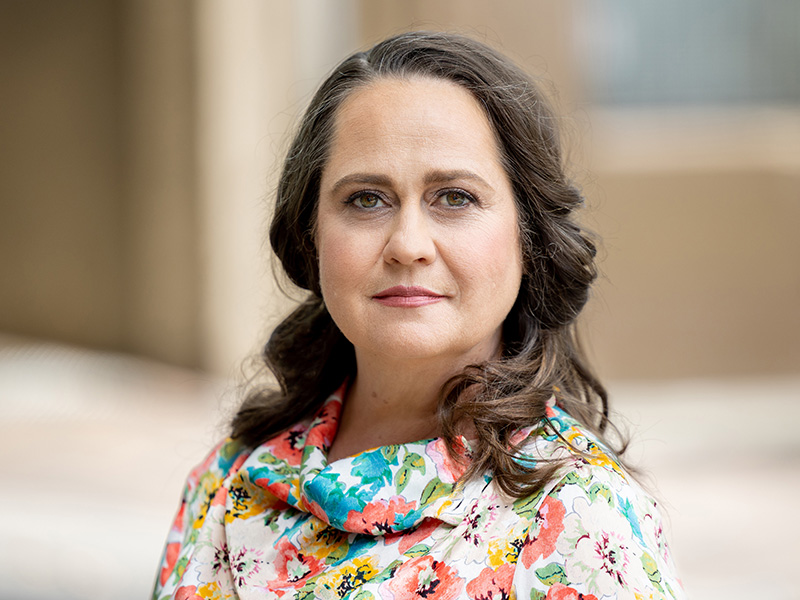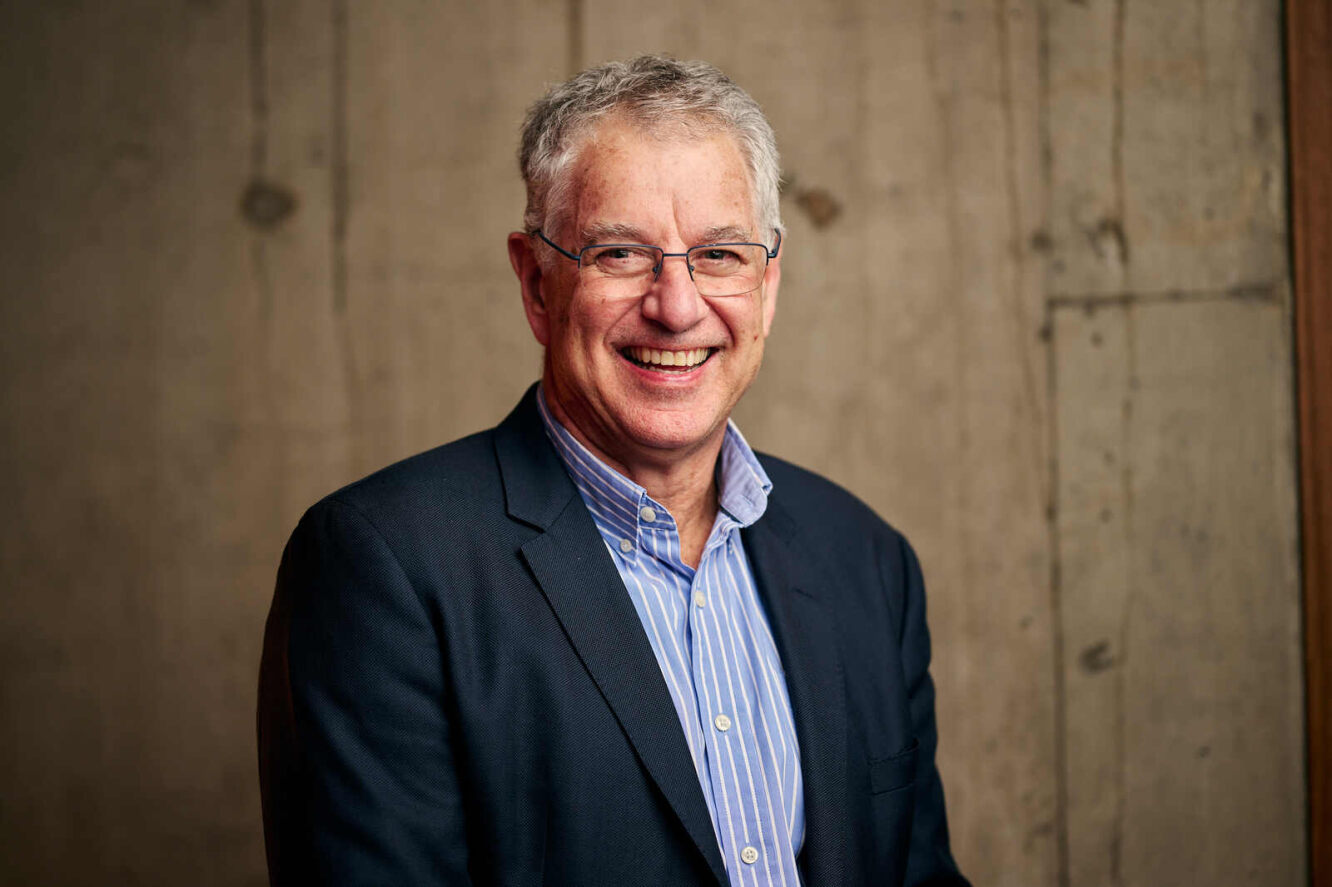Med Tech Talks
Transforming maternal healthcare with Professor Michelle McIntosh
Professor McIntosh is an award-winning scientist who is known for her inhaled oxytocin research, which aims to transform maternal healthcare, particularly in developing countries where price, injecting capabilities and cold-storage capabilities may present barriers to safe and effective childbirth.
Professor McIntosh’s career has seen her win numerous awards, such as the Monash Vice-Chancellor’s award for Excellence in Research Impact . She has presented her work on inhaled oxytocin to the United Nations General Assembly in New York and her work was recognised former US Secretary of State and presidential candidate, Hilary Clinton.
In this episode you will hear about:
More information:
Take a look at the Monash Institute of Pharmaceutical Sciences website: MIPS
Take a look at Professor Michelle McIntosh’s Monash University Profile: Professor Michelle McIntosh
Professor Michelle McIntosh [00:02:16] Thanks very much, Robert. Very happy to be here.
Robert Klupacs [00:02:19] Michelle, your research is just so outstanding and exciting and has the ability to change maternal health care from what appears to be an unprecedented scale. Can you explain to our listeners what oxytocin is and why developing an inhaled version of this drug is so necessary and potentially transformative?
Professor Michelle McIntosh [00:02:41] Absolutely. So during childbirth, there’s always the possibility of complications. And one of the most common complications in childbirth is excessive blood loss called postpartum hemorrhage. And so postpartum hemorrhage can be prevented or treated with an injection of oxytocin. So oxytocin is a naturally occurring hormone in the body, but it’s also made. What’s the word I’m looking for? Synthetically. It can be synthetically produced and then prepared as an injection for mothers immediately upon birth of the baby to prevent excessive blood loss. The oxytocin is a peptide molecule, and so it’s not particularly stable in the injectable formulation. And when I say not particularly stable, it’s stable for possibly up to about two years if it can be stored between two and eight degrees Celsius. But oftentimes in developing countries, it’s not possible to have the oxytocin kept under those refrigerated conditions from the point of manufacture all the way through to when a woman might receive treatment for preventing a hemorrhage. And so what we’ve been working on at Monash for a number of years now is creating a formulation of oxytocin that is resistant to degradation at higher temperatures. So it’s heat stable and it can also be inhaled and absorbed from the lungs into the bloodstream and then go on to act in exactly the same way that pharmacology is the same, that it can then prevent blood loss at childbirth.
Robert Klupacs [00:04:35] That’s amazing. Obviously, it’s making and will make a huge impact. I’m really interested from our listeners perspective. What was your inspiration for going down this line of research in particular?
Professor Michelle McIntosh [00:04:49] I would love to be able to tell you that I had sat back and observed these unmet medical need, but actually I had a student contact me and he was based in Botswana and he had received a government scholarship to do a master’s degree and he wanted to come to Monash University. And so he emailed and said, Could I come and study with you? And I sat down with a couple of my colleagues and we were brainstorming. What project could we come up with for a student from Botswana? And he wanted to learn about analytical chemistry and how you compare generic medicines with the innovative medicines. And so actually we created the project because it would meet his educational objectives. And we thought it would be interesting. And we were aware that there was an issue with the stability of oxytocin and cold chain was an issue in low resource settings. But it was really after we started the project and got moving that we became aware of just how much an innovation like this would be needed and would be beneficial in managing maternal health.
Robert Klupacs [00:06:08] Looking at your background and obviously I didn’t realize it started out that way, but your technology has been on a very interesting journey to get to the clinic. And one of the key things that we’re exploring in this series is how innovation leads to improved health health outcomes. As you know, a discovery without getting into the clinic and beyond really doesn’t help mankind. And so for us is the Bionics Institute. The whole pathway of translation is something that is fascinating to us. So we’d love to hear about your stories of translation, and we would love for you to tell us a little bit about your whole translation experience. Any barriers that you had encountered in any that you had to overcome? And then from there, any learnings for anyone else going through the same journey as yourself?
Professor Michelle McIntosh [00:06:55] Yeah, absolutely. It’s been an incredible journey and I’ve learned an enormous amount along the way. But it is a good example of something that started off as an idea in the lab. It took us a while to actually achieve of dry powder formulation that did have the stability profile we needed. So it wasn’t simple. There was some quite complicated pharmaceutical science needed to be able to stabilize the peptide in a solid, dry powder form, and that has only ever been done once before. There are no other inhaled peptides systemically absorbed from the lungs. Insulin was the first and it was not a big commercial success, so it’s actually probably not possible to even get that on the market now. But they had achieved a great deal of understanding of pharmaceutical science and what was necessary to create a stable, dry powder. So we were able to learn from that, but it was that was happening in parallel to when we were also having to work out well, how are we going to prove that this concept works so we know that we want to get oxytocin into the lungs? How are we going to demonstrate to people that in fact, if it gets into the lungs, it will get into the bloodstream and it will cause the smooth muscle of the uterus to contract, which is what oxytocin does when it’s injected. And so we’re very fortunate at Monash that there was a great deal of expertize around reproductive physiology and IVF technology was developed at Monash several decades ago. So there were researchers available with large animal models that they had a very good understanding of the process of labor and birthing and we could use we actually used sheep as the large animal model because sheep have anatomy of the lungs that are similar to humans, not the same, but similar and certainly a better representation than rodents. Quite often in the translational journey of a pharmaceutical product, rodents would be the first model that you’d look at for some data. But we were able to go into sheep and we didn’t teach the sheep how to inhale. We actually put a nasogastric tubing and released the oxytocin powder into the lungs, and we would do that in a sheep that was pregnant. We induced labor. They had their lambs. And then within 6 hours of lambing, we were then able to look at oxytocin delivered into the lungs or injected. And we had electrodes implanted on the uterus, and we could then measure muscle contractility on the uterus. So and we also collected blood samples so we could collect pharmacokinetic data that told us how quickly the drug was absorbed from the lungs and moved around the body. And also pharmacodynamic data that told us about the activity in the body as a response to the oxytocin. So a PCP D relationship. And that was very powerful proof of concept data for us. So that data we had funding at that stage as an early stage grant challenges exploration grant from the Bill Melinda Gates Foundation. So they’d given us a $100,000 US grant to look at proof of concept. And when we generated this data and showed that to them, then we were successful in getting a second phase grant challenges exploration grant, which was for $1,000,000. And that really took us into that real translational stage because we then had the funding to hire a dedicated project manager. So I was doing this project while I was teaching and doing other research and other service activities. So having somebody who was then dedicated to work on this full time and that person in fact still works on the project, he’s been with us for over ten years, Pete Lambert. He came from working in industry, in respiratory drug development. And so bringing that real industry expertize into the university has really helped with that translational process. And when we work with pharmaceutical companies, we’re we’re talking the same language and the same time frames. And they can see that, you know, we’ve got a team of people that we’ve built up. And it’s that some of us have been in academia all the time, but others have been in industry and have experience in developing products.
Robert Klupacs [00:12:13] Is that something that MIPS is really trying to push, getting more industry people to work alongside people like yourself at the academic level?
Professor Michelle McIntosh [00:12:22] I think we’ve definitely seen it as a very successful method of having people with an industry background and particularly successful having project managers. And I think that’s one area where universities historically haven’t always invested the resource in having a project manager to guide something through. And MIPS has done that now on a number of big initiatives, and it’s been very successful.
Robert Klupacs [00:12:52] It’s really fascinating to hear you say that because we’ve spoken to a number of people in this series, and that’s a theme that comes out quite commonly. I just want to move on. I wasn’t aware until we were prepping for this broadcast. But you presented your research to the United Nations General Assembly in New York. How big a moment for you personally was that?
Professor Michelle McIntosh [00:13:15] Oh, that was a very surreal moment. I have to say, that’s not something that you even sit down and dream about when you start your career. And it’s sort of you pinching yourself thinking, is this really happening? So it was it was very personally and professionally, quite a significant moment. And, you know, great for the project. A big part of this project has been building the brand and the recognition of the the project and been able to present in forums like that really helps establish the credibility.
Robert Klupacs [00:13:54] Well, I think you should be really proud and it’s wonderful to see an Australian solid stand up there. Michel again, looking at your career and you and your things that you’ve done to date. Again, prepping for this podcast, it’s really quite extraordinary. Remarkable. But what we’re really interested in finding out in this series is how people found their way into what they’re doing today. I would love to know a bit about how you found yourself in the pharmacy all those years ago and what the twists and turns were that led you to do what you’ve done over time. And then if there’s anything that you’ve done that you think is interesting as a guide to other people who might want to follow you.
Professor Michelle McIntosh [00:14:34] Yeah, sure. So I studied pharmacy bachelor of Pharmacy as my undergraduate degree at the exact same location where I am now. So I’ve haven’t gone very far. But it was.
Robert Klupacs [00:14:47] I wouldn’t say that.
Professor Michelle McIntosh [00:14:50] It was early in the pharmacy degree that one of my student placements was at GSK in Boronia. And as soon as I was doing that placement and most most of our placements were either in community pharmacies or in hospital pharmacies. But occasionally, some people would choose a placement in industry. And that was where straight away I realized this is what I want to do. And my the advice I was given while I was out there was, if you want the opportunity to have a career in the pharmaceutical industry and you want no barriers to sort of success, then having a PhD is a good idea. And so that was when I came back after my placement and talked to potential supervisors and explained, I really want to work in industry, I really want to train with you and understand research better. And I had initially thought that I wanted to work in industry. My post-doc was at the University of Kansas in the US and I was in a group that we didn’t do any teaching or any of the usual university activities. It was very much centered on technology transfer and identifying technology with commercial potential in the university and creating that package of data that you need to then look for venture capital funding or spin out a company or commercialize it. And in fact, that’s where I’ve stayed in that interface, really. And I’ve felt that it gave me the best of both worlds to be in, in the university research environment, but interfacing with industry, and that’s allowed me to sort of successfully establish my career in Melbourne, in addition to doing my research with the inhaled oxytocin, but also to engage a lot with the industry and build some really strong partnerships all around Australia and internationally.
Robert Klupacs [00:16:57] And that’s a great segway into one of the series of questions that we want to ask you and everyone else on this podcast. We’re trying to get a view of what people like you who are at the coalface, how you would actually define innovation, and then secondly, what Australia can do to continue to build on innovation.
Professor Michelle McIntosh [00:17:15] Yes, I think that’s a great question and I always think about innovation as a new a new way of doing things or doing things differently. The end point might be the same, but you can achieve it perhaps more efficiently or a smarter way of doing things. So it’s really about thinking outside the box and perhaps not being constrained. We very often, if we don’t question things, why do we do it this way? Because we’ve always done it this way, but we don’t have to do it this way just because we have. And so that’s the innovative process for me, anyway, is thinking about different ways of achieving the outcome you’re interested in.
Robert Klupacs [00:18:05] Yeah. And what do you think Australia could do better? I mean, we talk a lot about saying Australia is a very innovative country and we can build a country in an economy based on innovation. But do you believe that? And if so, what can we be doing better?
Professor Michelle McIntosh [00:18:21] Yeah, I absolutely believe that Australia can and is an economy that thrives on innovation and people are incredibly creative. And part of that I think is, is almost part of our culture is to be creative. And sometimes, you know, some of the most creative ideas come from people who’ve been in situations personally. Perhaps they’ve lived in a country environment rather than a city environment. So they’ve got to be creative and come up with things to to do. And they don’t have all the same entertainment on their doorstep or, you know, they’ve got to come up with a different idea. How do I get from A to B if I’ve, you know, only got a bicycle and it’s 40 kilometers away? So I think there’s a cultural aspect to how we think about innovation. So. Well, one thing that I think we could do better at in Australia is we don’t accept failure very well. And learning from making a mistake. And whenever I’m teaching and talking to our students, I’m trying to explain that if everything works the first time, you’re not going to learn a lot. And when we learn the most is when something doesn’t work. And in terms of startup companies and entrepreneurs and the Australian culture doesn’t embrace the failure of those ideas very well. And so if you start a company and it fails, it’s hard to then get on to your second company. Whereas there are other countries with a different culture. And if you started one company that failed. Get up and try the second one and the third one, and maybe it’ll be your fifth company. That’s the big success. But it’s almost seen as a badge of honor to have been able to pick yourself up and get back on on the horse, so to speak, and have a go at it again. So that would be the area that I imagine Australia could really improve because you know, if a technology doesn’t work, it doesn’t, doesn’t mean you failed as a person. It probably wasn’t going to work. It didn’t matter who was running the company or running the the clinical development program. So recognizing that a technical failure isn’t a personal failure and then still supporting those people to try for the next innovation, I think that would be a big a big advantage or improvement for Australian med tech.
Robert Klupacs [00:21:04] That’s fantastic advice. What do you think the biggest opportunity is for Australia in your area of drug delivery, development and biotech and perhaps med tech, an area where the great knowledge and capability of Australia could really make a difference?
Professor Michelle McIntosh [00:21:18] I think the COVID has created some opportunities for us. I mean, we’ve always been very, very strong in biomedical research and life sciences in Melbourne and in Australia. And what we’ve learned through COVID is that we can do so much together online. We don’t have to always be in the same room. So the fact that we’re in a remote country that requires a ten, 12 hour or more floor to get to it, we’ve demonstrated that’s not a barrier. It shouldn’t be an obstacle any more. And, you know, I hear people sometimes say, oh, we don’t have the right skills in Australia to be able to commercialize these things. And I just. I don’t I don’t buy that argument at all. And we can find the skills and we can bring bring the people in. And you don’t have to physically sometimes be present here. And we’re seeing a huge investment from federal and state governments in manufacturing and manufacturing of farmer and med tech products. And again, that, I think is a big opportunity for us to really establish a footprint in. Taking products from ideas translate, commercialize, create jobs, export product. And, you know, I think as much as CAVE has been very challenging and difficult for lots of reasons, it has created some opportunity in the mid tick sector.
Robert Klupacs [00:23:01] Oh, very good insight. Another interesting segway into my next question I had for you, because we’ve identified and I know that you’re the director of the newly formed many Medicines Manufacturing Innovation Center, and I think that picks up on all the things you’ve just said. But can you give our listeners some insight in what the initiative is designed to do and how it’s meeting the needs of its clients and what your long term vision is?
Professor Michelle McIntosh [00:23:28] Yeah, absolutely. So the Medicines Manufacturing Innovation Center was we first received government funding to establish the center, I think it was towards the end of 2016. So we’ve almost been five years or so of operation, but prior to that we had a relationship between GSK and MIPS and that had been very successful. So GSK had felt that they’d benefited from access to our pharmaceutical scientists and the dedicated research laboratories that we had, and we could tackle some of the problems that they didn’t have necessarily the head count for in their own R&D departments. And so they’d bring it in to MIPS for some help. And it was David heard from GSK who went to the government and said, this has been fantastic for our company. It’s something that should be available to all companies in Victoria and our big pharma companies. They tend not to compete with each other, that they’re not competing for the same products and the same clients. They’re often competing with the their other sites in other countries for work. And so we got all of the companies together to talk about how would we do this, how do we protect people’s intellectual property and provide them access to a team of dedicated pharmaceutical scientists to problem solve? And that was really what we set out to do. And we came up with a format that would work. And we’ve grown from when we started in late 2016, there were two and a bit people, so not not three full time people working on it. And we now have over 24 staff in the MRC who again not everybody’s full time but a lot of full time staff, and we’re working with almost all of the biotechs and start up companies and we’ve expanded from just working with Victorian companies now to reaching out to companies all over Australia and internationally. And our real expertize is in optimizing and understanding the formulation design space. So if people can be taking the best formulation forward into clinical trials and a formulation that is capable of being manufactured at commercial scale, the sooner you do that in the development process, then you’ve overcome what could be barriers further down the track. And so that’s the area that we focus on along with workforce development. So that was one of our key deliverables with the government was training people so that they were really job ready. So we take a lot of undergraduate students on placements, not just Monash undergraduate students, but from a range of universities and give them placements anywhere from four weeks to 12 weeks. And it has all, almost all of them have gone on to then be employed in the sector. And so we’re really looking to fill that pipeline of people going into pharmaceutical med tech companies.
Robert Klupacs [00:27:04] Has the government spoken to you about using it as a template across other sectors and in other parts of med tech, other parts of drug innovation, drug discovery, drug manufacturing
Professor Michelle McIntosh [00:27:15] We’ve certainly had discussions with them around med tech and also with manufacturing and how we feel that pipeline. And you know, one of the things that’s worked very well for us is to have a a single portal where the farmer med tech companies know to contact us. And if it’s not something that’s within our area of expertise, we can connect them to the. The right people within the university. So simplifying that interaction with university is also an element that has worked very well. And we have a pretty, pretty simple approach to IP and one that challenges the thinking of universities at times. But we do assign the IP to the company upfront, so that’s factored into the pricing model. But then we know there’s no delays or it doesn’t run into problems when the boards are deciding should we, you know, work with this group? They know they’re going to get expert input in a timely manner and they retain the IP for their own product.
Robert Klupacs [00:28:27] It’s an interesting model. Helloworld University, a lot I can imagine that would have been quite controversial, but I imagine the companies on the other side really like it.
Professor Michelle McIntosh [00:28:37] The companies have really liked it. And I think, you know, the university has also seen the benefit that is derived from it. And companies have found that it’s been a pretty straightforward process to work with us and work with the university. And then when we can show and build a case back to the state government, back to the university, this is the investment that’s been brought into Victoria because this company is now listed on the ASX or on the Nasdaq or they’ve raised this much venture capital funding, not exclusively because of us, but we’ve contributed to their product pipeline and contributed to their ability. We can make a pretty strong case that we’ve had a big impact on the economy.
Robert Klupacs [00:29:23] I just have two more questions for you, Michelle. The first one I was ah missing. Not asking before when we’re talking about you and how it oxytocin. Where is the product now? Is it on the market? Is it being used?
Professor Michelle McIntosh [00:29:37] It’s not on the market. It is on the very long journey of clinical development. We are in fact scheduled to run a clinical trial here in Melbourne starting fourth quarter this year and that is to allow us to transition to a new device that’s a lower cost, simpler to use, device which is better suited to our end users in low resource settings. So we’ve conducted a phase one and a phase two study will be doing another phase one. And then we’re working with our commercial partners on what’s the the critical studies we need to do to get product registration and then to be able to roll it out in country.
Robert Klupacs [00:30:24] And when do you think it’s likely to be able to be available, particularly, as you said, in the developing world?
Professor Michelle McIntosh [00:30:30] Well, unfortunately, it’s not as soon as I would like it to be, but that’s the nature of pharmaceutical development. So I suspect it’s still at least another 4 to 5 years before it’s registered.
Robert Klupacs [00:30:44] Yeah, it’s a long journey, but I think it’s going to be a very worthwhile journey.
Professor Michelle McIntosh [00:30:48] Yes, there was a vaccine and we were responding to a pandemic and we had billions of dollars invested. We might be able to get it done quicker.
Robert Klupacs [00:30:57] But yeah, sometimes that’s just the way the world is, Michel.
Professor Michelle McIntosh [00:31:00] Yes.
Robert Klupacs [00:31:01] And my very last question. Your journey and what you’ve done is really quite as we said before, extraordinary. And I love to think about what we could use that experience to do more. What can we do in this country to sort of mirror what you’ve done in terms of perhaps putting other people through a similar experience or program that you’ve had? Is there anything you would think about with the younger generation that we can sort of put them on a similar pathway to yourself?
Professor Michelle McIntosh [00:31:28] I think some of the programs that are coming out now where there’s industry fellowships available or the bridge program that’s allowing early career stage researchers to get a look in to the process of the commercialization and how do we raise capital and how a business case is constructed. All of those things. And it’s much more of finding, you know, PhD students and post-docs and now viewing the possibility of a career in industry as as a laudable goal, which of course it is. But it’s many years people have talked about it like, oh, I’ve quit academia and I’ve gone to gone into industry as if it’s a second prize, but it’s not. The research that’s done in industry is as good and requires the same skills and incredibly talented people. And so I thought I think we shouldn’t, you know, confine people’s expectations of what a successful career is so you can be successful in academia and in industry. And if if universities are more open to academics with slightly less traditional profiles like mine, with the the impact associated with your engagement with the industry or the impact of your research is rated equally as highly as. Journal articles published or grant dollars received. Then I think that will also foster more of, you know, this type of career path that allows almost a a blending of both academia and industry.
Robert Klupacs [00:33:20] Thank you, Michelle. All your insights today have been fantastic. And on behalf of countless people across the globe, we thank you for your innovation, your dedication to your discipline. And also, we hope very quickly and shortly that your innovation will make it to the developing world, perhaps a bit more quickly, quicker than the new hope. I’d really like to thank you for joining me today on Med Tech Talks, and we are all looking forward to following your journey in transforming maternal health care. To our listeners. I hope you enjoy listening today and I look forward to introducing you to our guests in future podcasts. There are links to everything we’ve talked about in the show notes and we look forward to welcoming you next time.
Listen to other episodes of Med Tech Talks here


